Fire Tamers
Sarcoidosis, a devastating inflammatory disease that can attack any organ in the body, has met its match at Johns Hopkins, where a wide-ranging team is collaborating on multiple fronts to make life better for patients.
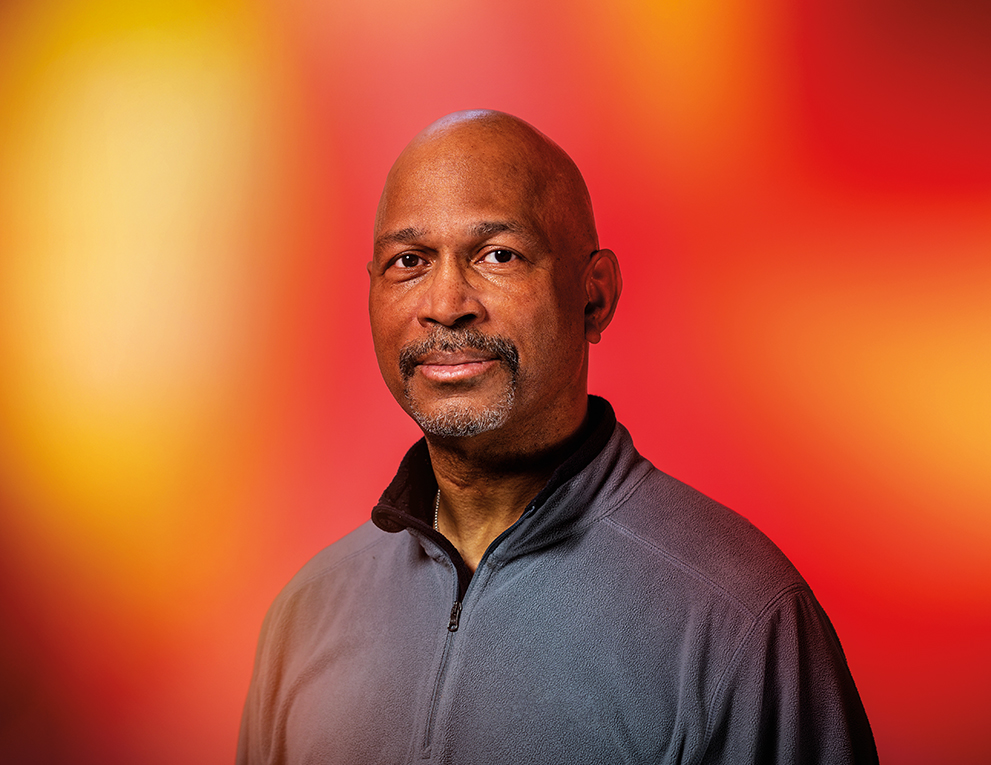
Receiving the correct diagnosis was just the first step in Larry Franklin’s decadeslong treatment for sarcoidosis.
Photo by Howard Korn
Practically as soon as Larry Franklin started to walk, the 66-year-old says, he also started to run. In adulthood, he began running marathons, half-marathons and 10-milers, always looking for his next challenge. But at the age of 32, he encountered a challenge that he’d never expected.
After becoming winded on a run, Franklin tried treatment for exercise-induced asthma — but eventually, his shortness of breath and chest pain affected his life beyond running as well. After he fainted at an allergist appointment, a pulmonologist he was referred to scanned Franklin’s lungs. “He said they looked like I had cancer or tuberculosis, or maybe even AIDS,” Franklin remembers.
After a biopsy five years later, his pulmonologist diagnosed him with sarcoidosis, an inflammatory disease that can affect any organ in the body. Although this rare disease affects only a couple hundred thousand Americans, more than 2,000 — including Franklin — receive care at Johns Hopkins. They are followed by a multidisciplinary group of pulmonologists, cardiologists, neurologists and a variety of other specialists.
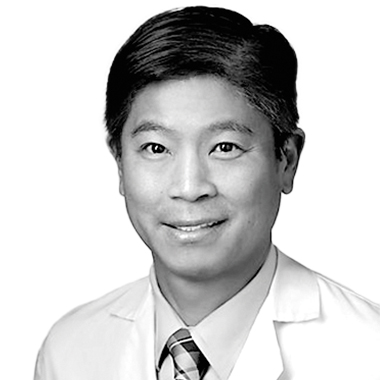 Edward Chen
Edward ChenThe long lag Franklin experienced between the onset of his symptoms and his sarcoidosis diagnosis is often the norm, says Michelle Sharp, co-director of the Johns Hopkins Sarcoidosis Program. “By the time patients come to us, many have been suffering with unexplained symptoms for years. And it’s not unusual for them to have seen more than a dozen different providers without getting an accurate diagnosis,” she says.
Working together, the team at Johns Hopkins is making headway in improving care for patients with sarcoidosis, as well as raising awareness among medical students and referring doctors so that patients can be diagnosed more quickly and begin treatment earlier. Johns Hopkins clinicians and researchers are also leading efforts in scientific research in pursuit of better treatments for the difficult-to-diagnose condition, which has no known cure.
“By the time patients come to us, many have been suffering with unexplained symptoms for years. And it’s not unusual for them to have seen more than a dozen different providers without getting an accurate diagnosis.”
Michelle Sharp
‘Horrific’ Symptoms
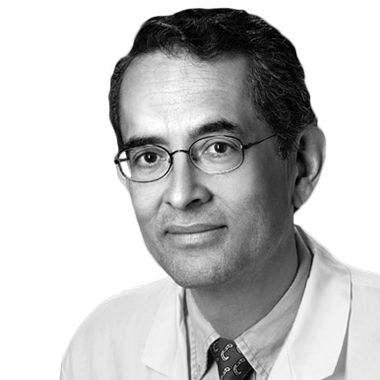 Carlos Pardo-Villamizar
Carlos Pardo-VillamizarSharp first learned of this disease during her pulmonary fellowship at Johns Hopkins. She and her sister were the first in their family to attend college, and Sharp had set her sights early on being a physician — a profession that helps ease the human suffering she was so familiar with after a childhood marked by instability. Thankfully, extended family, including her grandmother and great-grandmother, and an algebra teacher provided encouragement to help her achieve her dreams.
“I just decided that I would be a doctor, even though I didn’t have a clear concept of what that really meant. I never thought of it not happening,” says Sharp, who attended medical school at Louisiana State University and completed her internal medicine residency at Johns Hopkins, where she served as assistant chief of service of the Osler Medical Service.
During her subsequent pulmonary and critical care medicine fellowship at Johns Hopkins, she visited multiple clinics in search of a specialty to pursue, but none had the combination of relationship building and social justice that she was seeking. When she met patients with sarcoidosis, she realized that this chronic and complex illness would allow her to really get to know patients over time, forging connections necessary for shared decision-making. And because the highest prevalence of sarcoidosis is in Black women, Sharp believed she could help address the health disparities that often accompany this disease. “I feel like finding sarcoidosis was destiny,” she says.
Characterized by the growth of clumps of immune cells called granulomas in various parts of the body, sarcoidosis typically strikes people in the prime of life, between the ages of 20 and 50. Symptoms arise from the inflammation spurred by granulomas, which can damage organs over time.
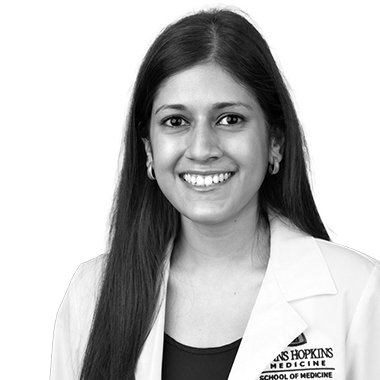 Kristen Mathias
Kristen MathiasIn the U.S., although Black women are disproportionately affected, people of any race or age can develop this disease. The cause of sarcoidosis is not well understood, Sharp notes, although researchers have speculated that it arises from a combination of genetics and an environmental trigger, such as microbes known as mycobacteria — relatives of organisms that cause tuberculosis and leprosy — or organic or inorganic substances, such as environmental pollutants.
Like Franklin, most patients with sarcoidosis experience problems with their lungs, making pulmonologists the doctors who typically manage care for the majority of these individuals (Sharp and Sarcoidosis Program Co-Director Edward Chen are both pulmonologists). However, sarcoidosis can present in a broad variety of ways, affecting the heart, eyes, nervous system, kidneys, bones, joints and skin. And every person with sarcoidosis is affected differently.
For Victor Eyo, a 65-year-old aerospace engineer, the first sign was a persistent and uncomfortable tingling in his right thumb that appeared while he was leading a payload launch at the Kennedy Space Center in 2016. Eventually, the sensation spread throughout his hand, down his arm and throughout his entire trunk.
“All that tingling 24/7, it was the most horrific thing I have experienced in my life,” says Eyo, who wears gloves to dull the sensation in his hands whenever he’s awake.
Eyo has neurosarcoidosis, in which granulomas collect in any part of the nervous system — the brain, spinal cord or peripheral nerves. After various treatments prescribed by a local neurologist were unsuccessful, he started seeing Johns Hopkins neurologist Carlos Pardo-Villamizar in fall 2017, who referred him to the Sarcoidosis Program in spring 2018. Under Chen’s care, along with that of a local rheumatologist, Eyo finally found some relief with infusions of infliximab, an anti-inflammatory medication.
These infusions, which he receives every six weeks, have significantly reduced the tingling sensation, although Eyo says that it’s still strong in his right arm — a consequence of permanently damaged nerves from neurosarcoidosis, his doctors say.
Below: Photo by Howard Korn
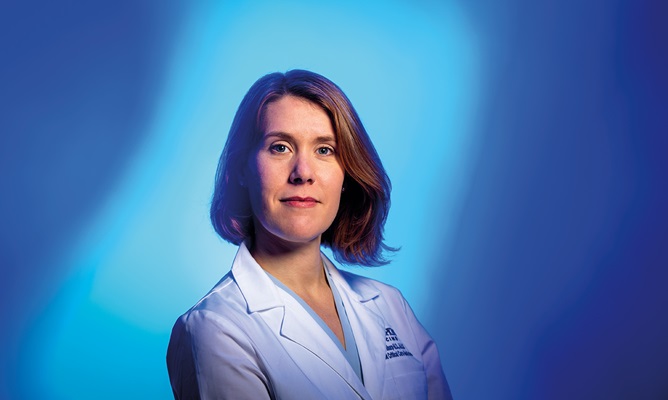
On a Mission to Mitigate Suffering
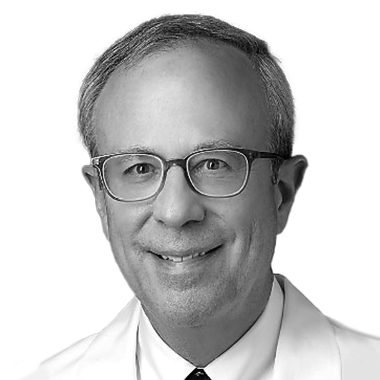 Barney Stern
Barney SternWhen Johns Hopkins neurologist Barney Stern first became interested in neurosarcoidosis in the late 1970s, little was known about it — or about sarcoidosis at all. Working at Sinai Hospital in Baltimore at the time, Stern reached out to Carol Johns, who had founded the Johns Hopkins Sarcoidosis Clinic in 1962. Johns allowed Stern to pore through more than 600 medical charts of patients in her clinic. He and his associate found 35 patients with similar symptoms, allowing them to categorize the neurological manifestations of sarcoidosis. They published the findings in the Archives of Neurology in the mid-1980s.
His observations provided some of the first documentation of what patients with neurosarcoidosis experience. Some of the most common symptoms, he says, are a facial paralysis akin to Bell’s palsy, and numbness and tingling of peripheral nerves, like Eyo experiences. However, patients can also have other symptoms stemming from granulomatous inflammation in the central nervous system, such as cognitive impairment, headaches, seizures and paralysis. Stern has been treating patients with neurosarcoidosis for decades, prescribing a range of immunosuppressive and anti-inflammatory drugs — medicines generally used to treat any manifestation of sarcoidosis.
Although neurosarcoidosis research has been sparse over the ensuing decades, Stern says he’s seen more and more researchers become interested in investigating this rare disease. Recently his colleague Pardo-Villamizar, a neurologist and clinician-scientist in Johns Hopkins’ Division of Neuroimmunology and Neurological Infections, received funding from the National Institute of Neurological Disorders and Stroke to delve into the clinical characteristics and mechanisms of disease in neurosarcoidosis patients using neurological imaging and next-generation DNA sequencing. In addition to examining clinical and imaging manifestations of this condition, Pardo-Villamizar and his colleagues plan to search patients’ spinal fluid for genetic signatures of bacterial infection and the patients’ responses that might hold clues to what causes neurosarcoidosis to develop. These findings could help researchers develop targeted treatments that might be more effective than current ones or help prevent neurosarcoidosis from developing at all.
“We’re doing a deep dive into neurosarcoidosis using modern scientific tools,” Stern says.
Sharp’s own research focuses on medication adherence and its association with clinical outcomes in sarcoidosis patients. Glucocorticosteroids, such as prednisone, are the current standard of care for patients with sarcoidosis, resolving symptoms nearly 100% of the time if patients can tolerate them. Unfortunately, Sharp explains, they come with a bevy of unwelcome side effects, such as triggering hypertension, type 2 diabetes and extreme weight gain. When Franklin began taking prednisone soon after his sarcoidosis diagnosis, he gained 67 pounds over the next few months.
Sharp’s initial findings showed that increased medication adherence was associated with better “health-related quality of life,” a term that broadly covers self-perceived health status as well as physical and emotional functioning. However, 66% of the 117 sarcoidosis patients she studied exhibited at least one nonadherent behavior, such as forgetting medication doses or not taking them on purpose. Black patients reported lower medication adherence than white patients — one of many racial disparities associated with this disease.
Previous research conducted at other institutions has showed that Black sarcoidosis patients have several times higher rates of hospitalization and death. A study that Sharp developed with former internal medicine resident Ofure Akhiwu — now a pulmonary fellow at Yale School of Medicine — and is currently being led by Johns Hopkins rheumatology research fellow Kristen Mathias under Sharp’s mentorship — has found that Black patients were referred to the Johns Hopkins Sarcoidosis Program an average of four years later than white patients.
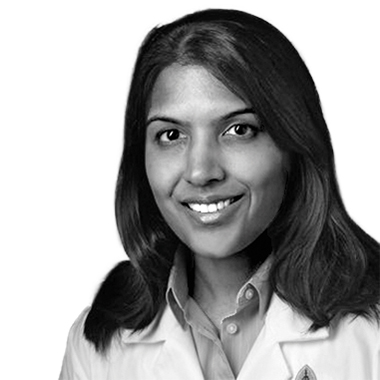 Nisha Gilotra
Nisha Gilotra“Our findings highlight a gaping disparity in access to care for Black individuals with sarcoidosis. More pressingly, they present a call to action for providers who care for these individuals,” Mathias says.
Sharp is currently examining why patients might be more or less adherent to medications beyond their side effects. She is assessing factors that might be at play, such as trust in the health care system, medical literacy and beliefs about medications, in addition to depression, anxiety and stress. Sarcoidosis itself can directly contribute to these last three, she says, causing unpredictable symptoms that can deeply affect daily functioning, ability to work, and social and family relationships. And because this disease is so rare, patients often have no one to commiserate with who truly understands.
“Using these findings, we can develop ways to support patients while managing their disease, avoiding unnecessary suffering,” Sharp says.
Another tool helping to move sarcoidosis research forward is the Johns Hopkins Sarcoidosis Registry, which includes a biorepository holding clinical information and biological samples from hundreds of patients in the Sarcoidosis Program. Collecting such detailed data on patients can help sarcoidosis researchers in a variety of fields, says cardiologist Nisha Gilotra, who directs Johns Hopkins’ Cardiac Sarcoidosis Program. Sarcoidosis can affect the heart in numerous ways, sometimes leading to heart failure.
“In the cardiac world, we really don’t have prospective clinical trials to provide any consensus or guidelines on what the best treatment strategies are for these patients. Our sarcoidosis registry is helping us find answers,” she says.
“Our findings highlight a gaping disparity in access to care for Black individuals with sarcoidosis. More pressingly, they present a call to action for providers who care for these individuals.”
Kristen Mathias
A Hard Journey
Every Friday at noon, Sharp joins Chen, Gilotra, Stern, Pardo-Villamizar and other sarcoidosis experts at Johns Hopkins for a multidisciplinary meeting to discuss patients — a must, she says, to manage the care of these often medically complex patients. Sharp began these meetings in 2019, soon after she and Chen began co-directing the Sarcoidosis Program. “My superpower is bringing people together,” she says.
She and her colleagues have also found ways to bring sarcoidosis patients together. In 2020, they launched a patient advisory board — a team of nine patients that meets quarterly to discuss ways to improve care and quality of life for those with the disease. Both Franklin and Eyo serve on the advisory board.
One of the board’s first suggestions was to institute a patient support group, which has met monthly over Zoom since the early months of the COVID-19 pandemic. Originally conceived as a way to ease the loneliness of sarcoidosis patients and help them find camaraderie, the group has expanded its mission into education, says facilitator Kayla Nyakinye, a nurse practitioner who also sees sarcoidosis patients in the clinic. Each meeting features an expert speaker who discusses some aspect of the disease. Recent meetings have covered vaccines for immunocompromised individuals and the use of artificial intelligence in diagnosing sarcoidosis and other lung diseases. Patients then gather into breakout rooms to chat with each other, sharing stories about their disease journey and tips for managing sarcoidosis.
Sometimes, more than 100 patients join the meeting, including a growing number from beyond Johns Hopkins, Nyakinye says. Many patients have become regulars, attending each month. “A lot of it is finding that sense of community, finding someone else who can identify with and understand what they’re experiencing,” she adds.
Sharp has also begun connecting sarcoidosis patients with Johns Hopkins medical students — a critical part of raising awareness of this disease among clinicians. When Sharp lectures to students about sarcoidosis, a patient now accompanies her, sharing their own experiences.
“It’s really helpful for them to hear someone’s voice and challenges, to hear how hard the journey with this disease can be,” she says.
His Fight Continues
Franklin’s disease journey has gone through its own twists and turns over the last three decades. Chen has cared for Franklin since soon after he received his sarcoidosis diagnosis in 1995. After unsuccessfully trying to wean off prednisone, Franklin developed abnormal heart rhythms that necessitated surgery to implant a loop recorder to monitor his heart. Although he’s lost most of the weight he gained from prednisone after he adopted a vegan diet, the drug spurred type 2 diabetes that now has its own treatment and challenges.
Now retired from his long career with the private sector and federal government, Franklin hasn’t let sarcoidosis slow him down. He bikes regularly, with plans to complete a 150-mile ride before he turns 70. He and his family have a trip to Greece on the table for next year. In addition, devotion to his grandchildren — some of whom he and his wife of 47 years care for during the week — helps keep him going.
“My slogan would be to do whatever you can to fight this disease,” he says. “I have a whole medical team helping me do that.”
